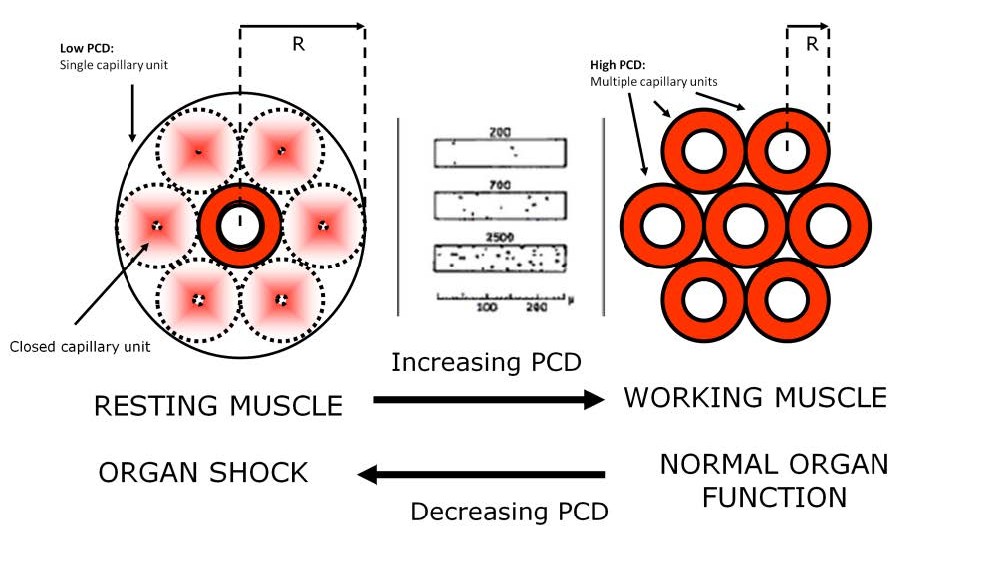
Perfused capillary density changes as the metabolic demands increase. Failure to increase PCD during times of stress is pathologic and is associated with the health state of the patient.
According to the Krogh model of the oxygen pressure field, perfused capillary density (PCD) is the most important variable in maintaining normal homeostasis. Normally PCD will change depending on the metabolic requirements of the surrounding tissue; increasing when metabolic needs increase and decreasing when metabolic needs decrease. The body’s ability to open and close capillaries is the key to maintaining homeostasis in any type of tissue without excessive utilization of physiologic resources.
During illness additional capillaries may need to open to maintain homeostasis. But these additional capillaries may fail to open and those that were previously open may close, resulting in decreased PCD. This phenomenon has many etiologies such as cardiac failure, blood loss, infection, spinal nerve damage, etc. However they are all grouped under a common diagnosis called “shock”. So another definition of shock is the failure of the body to open an adequate number of capillaries to supply oxygen and remove carbon dioxide. This can occur even in the presence of normal cardiac output and oxygen delivery. So in OPFT terms, shock is simply inadequate PCD, whatever the cause. Shock can surreptitiously occur even if cardiac output and oxygenation seem normal because PCD in vital organs cannot be quantified clinically using the customary assessments. When poor PCD occurs the patient is deemed to have a ‘lethal corner’.

Perfusion Theory is an educational platform for the Oxygen Pressure Field Theory (OPFT). August Krogh’s theoretical concept of the oxygen pressure field is explained and then applied to clinical applications in perfusion practice.